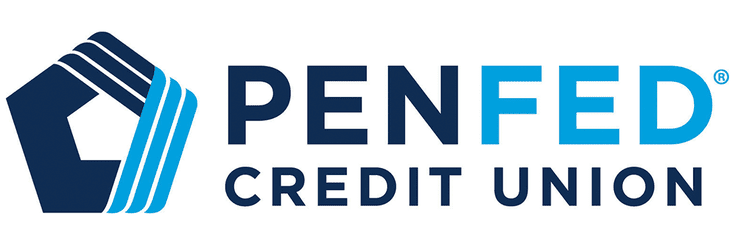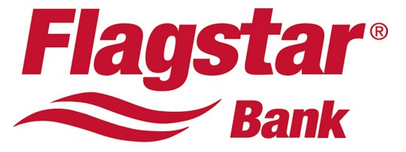Best HELOC Lenders of 2025
Lashay Lewis | Feb 20, 2025
A home equity line of credit, or HELOC, is a great way to finance home improvement projects, consolidate debt, or cover unexpected expenses. HELOCs use part of your home equity to give you a revolving line of credit. Of course, you’re putting your home on the line, so if you default, you may lose it to foreclosure and failing to do your homework may mean higher costs and less flexibility than you need.
Therefore, it’s crucial to select a loan lender with the best HELOC rates, flexible repayment terms, and low loan costs. But with so many HELOC providers, how do you choose the best one? Here is a list of some of the best HELOC lenders we know:Best HELOC Lenders
| Lender | HSH Rating (?) | MIN CREDIT SCORE | Fixed or Variable Rate | |
|---|---|---|---|---|
| PenFed | 660 | Variable Rate | Learn More | |
| Figure | 640 | Fixed Rate | Learn More | |
| US Bank | 680 | Variable Rate | Learn More | |
| Spring EQ | 680 | Variable Rate | Learn More | |
| Flagstar Bank | 660 | Variable Rate | Learn More |

Pre-approval Time
same day pre-approvalMIN CREDIT SCORE
660Fixed or Variable Rate
Variable RatePenFed
Who is it good for?
For buyers who want to stay within a credit union and need flexible borrowing limits for their needs.
Pros
- High loan-to-value (LTV) ratio of up to 90%
- Offers low APRs with an introductory rate of as low as 0.99%
- Covers most of the closing costs associated with its HELOCs
Cons
- $99 potential annual fee if you’ve not paid at least $99 in interest in the past year
- Early repayment penalty of reimbursing closing costs if you close your loan within 36 months
- No online loan application process
Read Full Review

Pre-approval Time
same day pre-approvalMIN CREDIT SCORE
640Fixed or Variable Rate
Fixed RateFigure
Who is it good for?
For buyers who need a fast approval time and minimal fees involved in their borrowing act on their home.
Pros
- Offers an easy, streamlined online application process
- Fast approval in 5 minutes and quick funding ability in as few as five days
- No maintenance fee or prepayment penalty
Cons
- Charges an origination fee of up to 4.99% of the initial draw
- Low loan cap that maxes out at $400,000
- You’ll likely pay 0.25% more if you’re not on autopay
Read Full Review

Pre-approval Time
same day pre-approvalMIN CREDIT SCORE
680Fixed or Variable Rate
Variable RateUS Bank
Who is it good for?
For buyers who already have an account with US Bank and want to avoid closing costs in their line of credit.
Pros
- No application fees and zero closing costs
- 0.5% interest rate discount for borrowers with a checking account or savings account on autopay
- Options for fixed-rate HELOCs
Cons
- Requires more than interest in the HELOC draw period
- Early repayment penalty of $500
- Charges a $90 annual fee after the first year for non-US Bank members.
Read Full Review

Pre-approval Time
same day pre-approvalMIN CREDIT SCORE
680Fixed or Variable Rate
Variable RateSpring EQ
Who is it good for?
Borrowers who are looking for flexible loan options and want minimal upfront costs.
Pros
- Customizable loan terms with options including 10 years of interest-only payments
- Access up to 95% of your home's equity
- Offers both home equity loans and home equity lines of credit (HELOCs)
Cons
- No in-person support or physical branches to visit
- No upfront disclosure of rates, terms, and eligibility requirements
- HELOCS and Loans not available in all states
Read Full Review

Pre-approval Time
same day pre-approvalMIN CREDIT SCORE
660Fixed or Variable Rate
Variable RateFlagstar Bank
Who is it good for?
For buyers who want to get a lot of money for their HELOC and don’t want to deal with high repayment values in the future.
Pros
- No closing costs if an account is open for 36 months
- Save 0.50% HELOC interest if you sign up for autopay from your Flagstar deposit account
- High loan amount available based on the loan-to-value ratio up to $1,000,000
Cons
- $75 annual fee after the first year
- No online application for easy access without phone or in-person visits
- Maximum CLTV of 80%
Read Full Review
How Does a HELOC Work?
A home equity line of credit is a loan that allows you to borrow against the equity in your home. Equity is the portion of your home's value that you own outright, and it can increase or decrease depending on the market value of your home.
Home equity lines of credit typically have lower interest rates than unsecured personal loans or credit cards, making them a good choice for many borrowers. You can use the money for any purpose, such as home improvements or debt consolidation.
A HELOC works just like a credit card—you borrow funds against your credit line up to your credit limit, and as you pay back, your credit limit is replenished. Mortgage lenders determine your credit limit based on your combined loan-to-value ratio (CLTV)
Most HELOCs are variable-rate lines of credit, usually based on the Prime Rate plus a markup, called a margin. Mortgage rates may be initially fixed for a short period of time before they begin to change, and will rise or fall as the Prime Rate moves up or down.
A HELOC has two phases—the draw period, which is usually ten years, and the repayment period, which is generally 20 years. During the 10-year draw period, you can make as many withdrawals as you need. You may also be allowed to pay interest only on the amount borrowed. After the draw period, you enter the 20-year repayment period, during which you make fully amortizing payments consisting of the principal and interest.
Which is Better: A HELOC or a Home Equity Loan?
HELOCs and home equity loans are ways of borrowing by using your home as collateral. If the funds you borrow are used to "buy, build or substantially improve your home", the interest you pay may be tax deductible. Although they might seem the same, there are critical differences in how and when the funds are disbursed and repaid.
A home equity loan is a second mortgage in which you receive a lump sum amount upfront and repay the loan in fixed installments for a preset period. This makes home equity loans a good option for large projects like investing in real estate. On the other hand, you can access HELOC funds when you need them, making it a great option for small home renovation projects. Which is more ideal for the average homeowner? Let's take a look at the pros and cons of each.
Pros and Cons of HELOCs
HELOCs offer flexibility, allowing you to borrow only the funds you need. They may offer the option to make interest-only payments during the draw period.
However, HELOCs mostly come with variable interest rates, which usually fluctuate based on the prime rate. This means if interest rates rise, you may end up with higher monthly payments. Some lenders offer a fixed rate HELOC, or allow you to lock in the interest rate for a portion or portions of your outstanding balance.
Pros and Cons of Home Equity Loans
Home equity loans usually have fixed interest rates, so unlike HELOCs, their interest rates typically remain constant over the loan period. With a fixed interest rate, your monthly payment won't change over the entire term of the loan, which usually runs from 5 to 20 years.
With a home equity loan, you will receive all of the funds in a lump sum when the loan closes, and be charged interest on the entire balance whether you use it right away or not.
Whether to choose a home equity line of credit or a home equity loan entirely depends on your financial situation. If you have uncertain or expect ongoing credit needs, a HELOC will likely be the best option, while a home equity loan may serve you better if you need a lump sum amount to finance a large expense.
If you have an older first mortgage with a high interest rate and want to tap your equity, it might make sense to consider cash-out refinancing. A cash-out refinance replaces your current mortgage with a new, bigger loan, you receive the difference between your new home loan and the prior mortgage balance in cash and your new loan term can be as long as 30 years.
How Hard Is It to Qualify for a HELOC?
If you want to qualify for a home equity line of credit, there are a few requirements you need to meet. Lenders have their own specific requirements, so check out the requirements of each lender to see if you can qualify for their HELOC. Here are some “standard” HELOC loan requirements:
Sufficient income to cover the new debt
Excellent credit, often with a FICO score above 620
A debt-to-income ratio typically below 43%
Is Getting a HELOC a Good Idea?
Tapping the equity in your home can provide some considerable flexibility in your budget, and a HELOC can allow you access to funds to do home improvements, fund educational or medical expenses or even consolidate outstanding higher-rate debts.
But using the equity in your home isn't risk free. If you should become unable to make the payments on your HELOC, you could lose your home to foreclosure. Because of this risk, it's important to use the equity in your home carefully.
Obtaining a HELOC to fund home improvements is often considered one of the best uses of your home equity. You can add value to the asset the loan is made against and make your home more comfortable or enjoyable at the same time.
If you are considering using a HELOC to consolidate other debts, there are a few things to consider. It's important to keep in mind that you may extend the repayment time for some of the debts you consolidate. For example, if you pay off a personal loan with three years remaining using a HELOC, those payments may now be stretched out over 10 years or longer, and possibly at a higher total interest cost.
To get the benefits of debt consolidation, you will also need to be careful in managing your new borrowing, too. Keep in mind that you won't be able to get the full benefits of a debt consolidation using a HELOC if you should begin to accumulate more new debt.
Even if payments of only interest are required, it can be a very good idea to also make payments of principal during the HELOC's draw period. This will help lower your interest cost and actually reduce your debt.
Conclusion
Lots of homeowners successfully use HELOCs for a wide range of reasons. If you are considering a HELOC to tap the equity in your home for any reason, it's a good idea to do so as carefully and cautiously as possible. Using only what you need and repaying it as quickly as you are able will lower your total costs and keep your equity reserve available to tap in the future should another need arise.